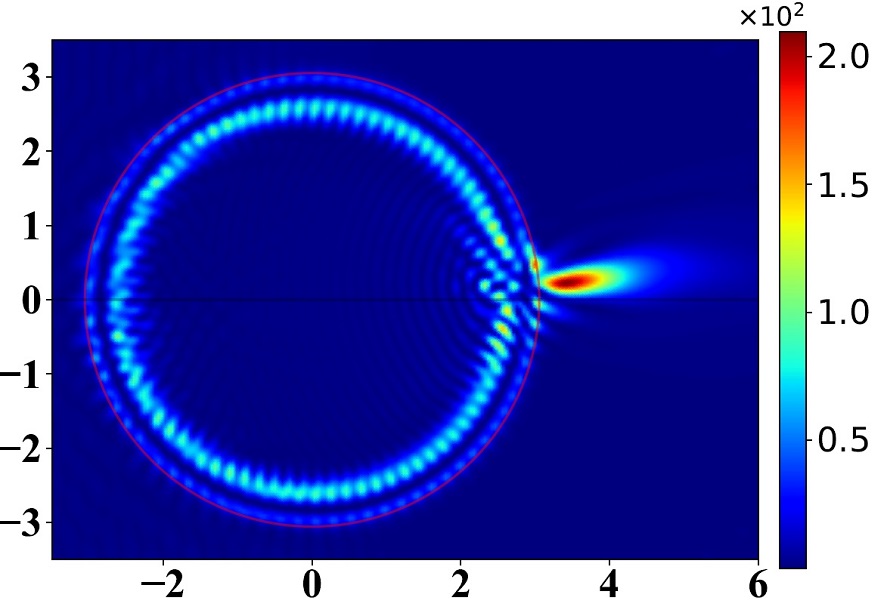The scientists' results are published in the journal Optics Express (Q1; IF: 3.8).
Generation of intense magnetic fields in dielectric mesoscale particles can be achieved under laboratory conditions. It is possible to achieve such an effect by using the superresonance effect, in which a specific resonant localization of optical waves occurs in the particle. In this case, the magnitude of the superstrong magnetic field is comparable to the field in neutron stars. At the same time, the question remains as to what happens to the generation of superstrong magnetic fields when the sphere rotates. This refers, for example, to the study of black holes that rotate at an enormous speed, slightly less than the speed of light. In addition, rotation can be considered as an additional "free" parameter, which we can vary to change the conditions of superstrong fields generation.
Scientists of Tomsk Polytechnic University, together with colleagues from China, modeled the process of rotation of a dielectric particle and studied the optical phenomena occurring inside and around the particle. They used a plane-polarized light wave to illuminate a dielectric sphere rotating at a stable angular velocity. They then performed calculations for the generated electromagnetic field using mathematical modeling based on modified Lorentz-Mi theory.
Rotation of a dielectric sphere leads to the formation of "curves" of light beams in the shadow part of this sphere - the beam propagates not along a straight line, but along a "curve". Under resonance conditions, the rotation leads to a "smearing" of the resonance curve, so that the so-called "hot spots" at the poles of the sphere become spiral-shaped. This allows us to determine the maximum rotation speed at which superstrong fields can be generated. All these effects can be explained as an optical analog of the well-known Magnus effect,
The scientists note that, depending on the modes and parameters of the problem, it is possible to form localized fields inside the sphere along the arc of the circle or outside it in the form of a photon hook.
The fundamental data obtained open up new possibilities for mesotronics. They can be useful for the design of resonators and various sensors. They are also promising for the creation of optical tweezers with new capabilities - a device that moves micron-sized objects with the help of a laser beam.
In the next stage of the research, the scientists plan to study in detail the impact of the generation of superstrong fields with the participation of a rotating spherical particle in relation to various areas of photonics.
